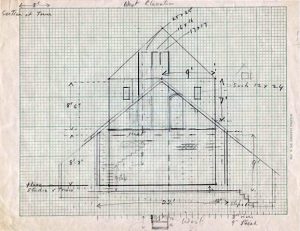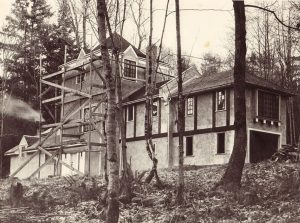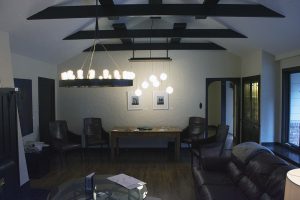A.C. Leighton: The Architect
Though many academic artists at the time frowned upon working in craft, A.C. did not share their view. He seems to have been very influenced by the Arts and Crafts Movement. Living during the industrial revolution, these artists desired a return to a simpler time and created works that emphasized function, the construction, design and the use of natural materials. The height of this movement took place from 1880 to 1920 and was personified by individuals like William Morris and John Ruskin. A.C. was no different from the Arts and Crafts practitioners. He enjoyed every step of the creation process from the design on paper to hand working the materials to the creation of beautiful but functional pieces. You could easily see that in the houses he constructed.
From 1930 to 1955, Barbara and A.C. moved around a lot and in many of the places they settled, A.C. designed and built their homes. While archival records are limited to only three of these houses, friends of the Leightons claim that there were up to 10. A.C.’s designs for these homes were inspired by the Arts and Crafts aesthetic and filled them with his own handcrafted furniture. The few houses of which we have records are all very similar to their last home, where the Leighton Art Centre is today. They all have a cruciform floor plan, a high central tower, and Tudor style half-timbering. Perhaps he was inspired by the English architecture that he had often painted. Many similarities can be seen between the Leighton homes and the buildings in his paintings.




